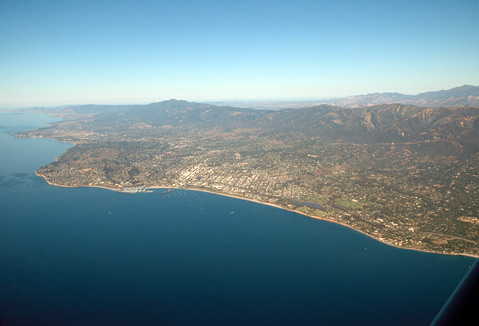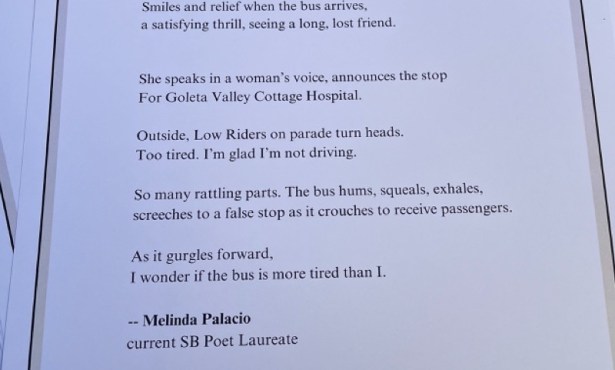Ocean Friendly Gardens
Tips and Classes for Creating Sea-Safe Landscapes

I recently flew over the Rocky Mountains and was again duly impressed by their height and mass. And the one fact of their existence that continues to inspire pure awe is that all the precipitation that falls on the United States is divided by this ridge. On the West, it all eventually flows into the Pacific Ocean, and on the East, it makes its way to the Gulf of Mexico.
Locally, when it rains, it is abundantly clear that all that water is bound for the ocean as storm drains gush and even streets become channels that empty into creeks and sloughs whose ultimate outlets cross our beaches straight into the ocean. The city sweeps the streets, and hopefully, people no longer empty oil and other toxic chemicals into the gutters and pick up after their pets, but there is another huge source of pollution, and that is our landscapes. Fertilizers, pesticides, and herbicides don’t stay put once they are applied. They are washed offsite by irrigation and rain and join in that exodus to the shore.
It’s no wonder then that the Surfrider Foundation has been sponsoring a program to educate the public about this issue and provide training to gardeners and professionals. Their Ocean Friendly Gardens (OFG) Program has already launched with a class on the basics of their “CPR” for gardens. In this instance, C stands for conservation (of water, fertilizers, pesticides, and herbicides); P is for permeability within a landscape to allow it to hold more of its water and nutrients; and R is about retaining rainwater by mimicking natural processes. The most important aspect of the retention devices (such as redirecting downspouts, creating “sponge gardens” that have contours to slow water and allow it to percolate into the soil, or capturing rainwater in barrels or cisterns) is to capture the first inch of rainfall occurring after a dry spell. This “First Flush” carries the highest concentration of pollutants to the ocean. If it can be diverted into vegetated areas (such as “bioswales”) or retained onsite, the toxins may have time to break down into less harmful compounds before they reach the ocean.
Although the Basics Class has passed, there are two more opportunities to get in on this valuable training. On Sunday, September 11, OFG will hold a hands-on workshop and onsite evaluation 10 a.m.-1 p.m. at Spencer Adams Park (De la Vina and Anapamu sts.). For landscape professionals, as well as avid home gardeners, there will also be a Core Concepts Workshop on Tuesday, October 25. This workshop will strive to develop a group of professionals that can help meet the demand of those who want to implement OFG but need assistance in doing so. For details on both of these workshops, visit oceanfriendlygardens.org.
Professional landscape architect and contractor Owen Dell has begun his own service to help gardeners assess their landscapes and make money- and resource-saving changes. Dell has been a pioneer in sustainable landscape design, even writing the book Sustainable Landscaping for Dummies. His Sustainable Landscape Action Plan (SLAP) is customized for each garden. The assessment begins with a 160-point matrix that identifies every opportunity to save water and reduce maintenance needs and dependence on chemical additives. Besides identifying simple changes that can create a more efficient and sustainable (and more beautiful!) garden, his SLAP will also save you money, guaranteed, or he’ll give you a refund. To see if you could benefit from this assessment, visit owendell.com/audits and start with the questionnaire.
If he doesn’t think he can help you and save you money, he will give you an “attaboy” and send you on your way. Dell makes all of the assessments personally, and his 40 years of experience are at your service (he’ll even throw in a free autographed copy of his Dummies book).
Still skeptical? Here are a couple of Web sites that could help you change your mind. Check out the Homeowner’s Guide to a WaterSmart Landscape, produced by the San Diego County Water Authority. The City of Santa Monica has also begun a very visual project to show just how such a water saving garden can look with their “Garden/Garden” project that compares actual landscapes of a size typical for urban Southern California.
Water is precious and will never be abundant here. Use it wisely.



